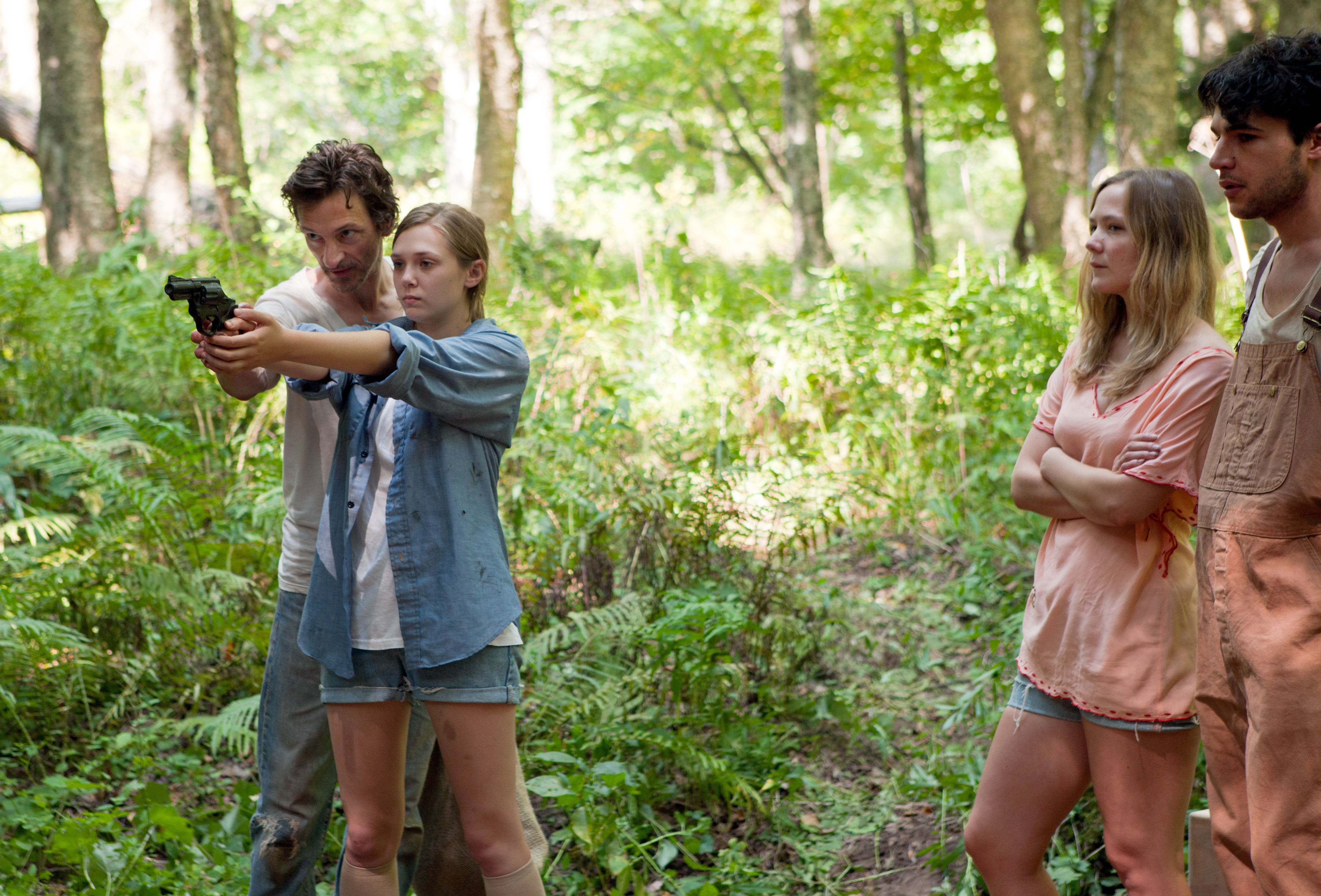Somewhere in the Catskill Mountains of upstate New York is a big white farmhouse surrounded by fields and patches of green grass. The house is enclosed by woods, and it is a long distance to the nearest town. There are about a dozen residents, mostly young adults, who live there communally. The women cook and clean, the men handle the handiwork and sleeping space is divided by gender. It seems idyllic, but viewers quickly get the sense that it isn’t.
This is the shared home of the cult that Martha, renamed Marcy May (Elizabeth Olsen), spends the rest of the film trying to distance herself from, both geographically and emotionally, in “Martha Marcy May Marlene.” Even after being picked up and taken to the Connecticut lakeside home of her estranged sister Lucy (Sarah Paulson), she still deals with the residual effects of the experience.
Martha has to learn how to reintegrate into non-communal society: In the real world there are rules, standards and boundaries.
One cannot, for example, walk in on an intimate moment between her sister and her brother-in-law and cuddle up on the other side of the bed. As the film explores Martha’s failed rehabilitation, it also backtracks to the events that led her to her sister’s home.
The timeline is all jumbled up ““ the film begins in the middle of the story and simultaneously takes the viewer back to the beginning and straight through to the end.
Life on the farm is not as peaceful as it appears in the opening scenes. The cult’s leader, Patrick (John Hawkes), is everything one expects. Charming and manipulative, he’s a flame that draws in damaged, unloved moths.
Surprisingly, it’s on the farm where the film struggles with being over-the-top. Cults tend to center around individuals and their personal philosophies. Patrick’s philosophy gets darker and crazier with each flashback, to the point that some of the things he preaches are a little ridiculous, if not outright laughable.
Thankfully, these moments are rare ““ for the most part, this is a subtle film and there is only as much dialogue as the scene needs to get its point across. The acting gets the rest of the message across to the viewer.
Above anyone else, Olsen’s performance is wonderful to watch. She has the slight advantage of being the star, but her Martha is natural without being catatonic. And though there may be a temptation to compare her to her older siblings, that temptation quickly fades away as viewers begin to recognize her own, individual talent.
This performance will establish Olsen as a star in her own right. One gets a sense of the worthlessness that drove Martha to the cult where, for a while, she felt like she’d found her purpose and her place. And her paranoia, her fear, her guilt and her shame are just as evident.
